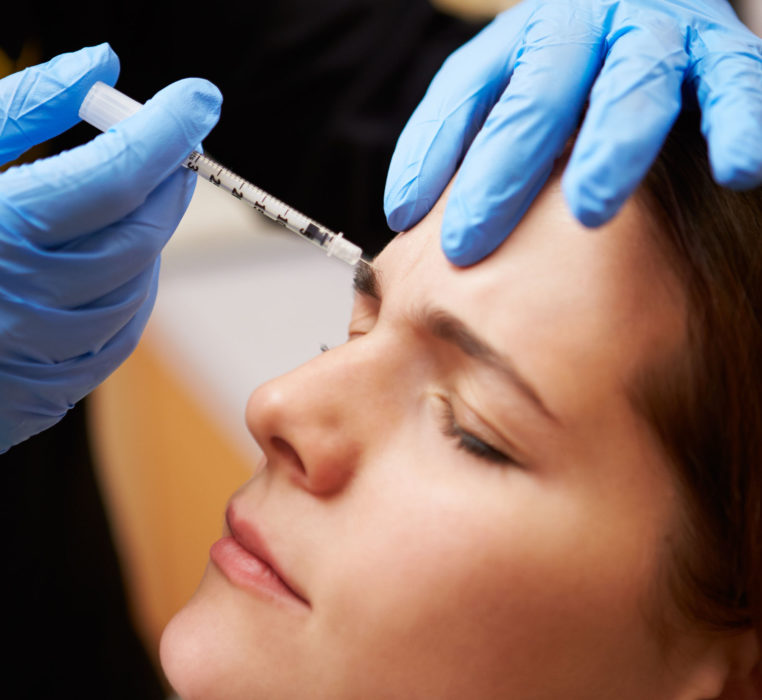
Non-Cosmetic
While Botox is most known for its cosmetic uses, there are many other treatments that incorporate Botox. Two common uses of Botox outside of cosmetic procedures include treatment for migraines and hyperhidrosis.
What is Getting Botox for Migraines Like?
Approximately 12% of people in America suffer from intense migraine pain. It was accidentally discovered that Botox injections could have a positive effect on migraines when people who were getting Botox treatment in their foreheads for cosmetic reasons noticed that their headaches were improved. Since then, Botox for migraines has become the only FDA approved treatment for a chronic migraine. It is also the only migraine treatment that actually prevents migraines, unlike other acute treatments that work to treat a headache after it starts.
Getting Botox for migraines consists of multiple injections around the head and neck at approximately 12-week intervals. Depending on the person, these Botox injections can dull future headache symptoms for up to 3 months at a time. The injection process uses a very small needle and takes about 15 minutes to complete. Even though the treatment consists of 31 injections in 7 areas of the head and neck, the Botox is injected into shallow muscles and most people say that they just feel a tiny pinprick.
Is Botox for Migraines Right for Me?
When you experience frequent or reoccurring migraines, they may be referred to as “chronic migraines.” A chronic migraine is different in that it is a chronic condition that can benefit from preventive treatments. A chronic migraine is defined as having 15 or more days per month that you experience a headache lasting 4 hours or more, with at least 8 of those days associated with a migraine.
You need to continue your Botox treatment for a chronic migraine every 12 weeks, or else you may not see the benefits. Most physicians who provide this treatment recommend starting with 2 treatments, 12 weeks apart. You should notice a reduction in your headache days over the course of those 24 weeks, and then from there you and your doctor can decide if it is best for you to continue with the recommended treatment every 12 weeks.
Botox for Hyperhidrosis
The official term for excessive sweating out of the underarms, hands, feet, groin, and face is Hyperhidrosis. If you suffer from this condition then you are familiar with issues like ruining your clothes and embarrassment from constant sweating in everyday situations, new situations, when you’re stressed or anxious or when you’re meeting new people.
Botox injections (onabotulinumtoxinA) can be used as a treatment for severe underarm sweating (severe primary axillary hyperhidrosis) when topical medications do not work for people 18 years and older. As of now, Botox is not used to treat excessive sweating in other areas of the body because the safety and effectiveness are still unknown.
For Botox underarm hyperhidrosis treatment, an entire 100 unit vial is typically required (50 units in each armpit). You want to make sure that your dosage is enough, because if you use less than the clinical amount then it will not be effective for as long. A topical numbing cream is applied to the armpits before the injections, and most patients report only a mild discomfort at worst. The results from this treatment typically last about 6 months.

